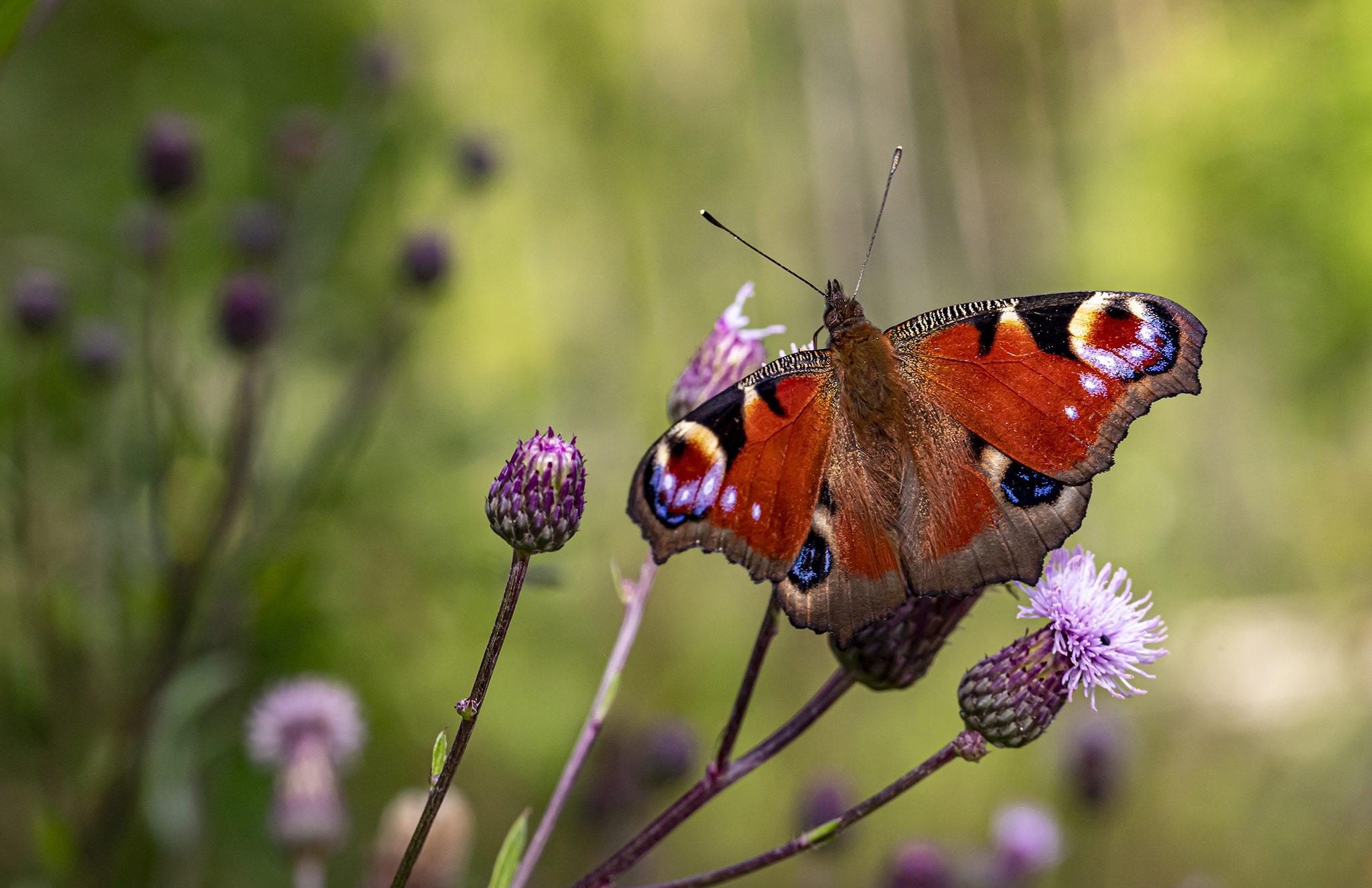The European Peacock, scientifically known as Inachis io, is a colorful and distinctive butterfly species native to Europe and temperate Asia. Here are some key characteristics and information about this beautiful insect:
- Appearance: The European Peacock is known for its striking and intricate wing patterns, which feature eyespots on the upper side of the wings that resemble the eyes of a peacock feather. The wings are predominantly reddish-brown with blue, black, and yellow markings. When the wings are open, they reveal the eyespots, which are thought to serve as a defense mechanism against predators.
- Habitat: These butterflies inhabit a variety of habitats, including meadows, woodland clearings, gardens, parks, and scrubland. They are often found in areas with abundant nectar sources and suitable breeding sites.
- Lifecycle: Like all butterflies, the European Peacock undergoes a complete metamorphosis, consisting of four stages: egg, larva (caterpillar), pupa (chrysalis), and adult. The females lay their eggs on the undersides of nettle leaves (Urtica dioica) or other related plants, which serve as the primary food source for the caterpillars. The caterpillars are black with spiky protrusions and white or yellow spots. After pupating, the adult butterfly emerges and begins its relatively short adult life, during which it focuses on mating and nectar feeding.
- Flight Season: The European Peacock is typically seen in flight during the summer months, from June to September in its native range, though this can vary depending on location and climate.
- Behavior: These butterflies are strong and agile fliers, often seen fluttering among flowers in search of nectar. They are known to be territorial, with males patrolling specific areas to seek out females.
- Conservation Status: The European Peacock is generally considered to be of least concern in terms of conservation status, as it is widespread and common throughout much of its range. However, like many butterfly species, it may face localized threats due to habitat loss, pesticide use, and other factors.
- Ecological Importance: As pollinators, butterflies like the European Peacock play a crucial role in maintaining ecosystem health and biodiversity by facilitating the reproduction of flowering plants.
Overall, the European Peacock is a charismatic and ecologically important butterfly species that adds beauty and diversity to European and Asian ecosystems.
Visited 410 times, 9 visit(s) today
Views: 410
Subscribe to the newsletter:
